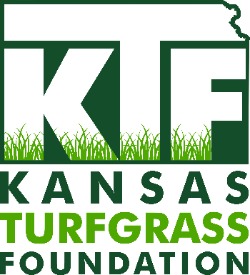Roughstalk bluegrass (Poa trivialis)


Roughstalk bluegrass, also called rough bluegrass or “Poa triv”, is a fine-textured, prostrate, spreading, cool-season turfgrass. The leaves appear shiny, light-green and may take on a bronze hue during heat or drought stress. Patches of this grass often resemble areas where petroleum products may have been initially spilled. It spreads rapidly using lateral creeping stems called stolons which can smother desirable turfgrasses. Like creeping bentgrass, this growth habit is incompatible when mixed with upright turfgrass species like perennial ryegrass or turf-type tall fescue. In home-lawns it forms puffy patches of turf that are prone to mower scalping. Additionally, it is prone to infection by numerous turfgrass diseases like dollar spot and brown patch.
Occurrence
This grass has become a serious problem weed over the last 15 years especially in Kentucky bluegrass and turf-type tall fescue. In home-lawns the dense irregular, circular patches may range from 6 inches to several feet in diameter and disrupt uniformity. It grows very well in moderate shade and prefers moist soils. It will tolerate full sun but will turn off color during summer heat stress. It is frequently found in shady areas near gutter downspouts where the soil is moist and the environment is shady and conducive for healthy growth. This grass is very competitive at low mowing heights, < ½ - 1 inch and will dominate other grasses at this height. This grass is one of the first grasses to green-up in the spring and may be the reason for mowing in the early part of the growing season. It most commonly invades lawns via contaminated seed lots but may also move throughout the landscape via the transfer of stolons by mowing equipment.
Non-Chemical Control
Maintain proper cultural practices for the species being maintained and mow at the highest possible height for that species. Close, < 1 inch, frequent mowing will favor rough bluegrass. Infrequent irrigation may help the competitive edge of desirable lawn turfgrass species since rough bluegrass is not as deep rooted as other species like turf-type tall fescue. In most situations, however, rough bluegrass will probably go dormant and resume active growth when conditions are more favorable. If only a few patches of rough bluegrass are present physical removal with a shovel or sod cutter is an option. Be sure, however, to remove the entire plant including stray stolons, then sod or re-seed with the desirable turfgrass species.
Chemical Control
Small areas in lawns can be spot treated with a non-selective systemic herbicide like glyphosate. Non-selective contact herbicides like glufosinate will provide poor control because they will not completely kill the stolons. Be sure to avoid applying these herbicides to desirable turfgrass species as they will be killed too. Rough bluegrass normally requires two or more herbicide applications to ensure complete control because stolons below the visible turf canopy often escape contact with the first herbicide application and regrow. It is also important to apply only when this species is actively growing. Attempting to control this grass during mid-summer or drought periods will be ineffective. Once the rough bluegrass has been completely killed, reseeding or sodding can be accomplished. Currently, turfgrass researchers are exploring selective herbicides like sulfosulfuron for rough bluegrass and creeping bentgrass control in lawn turf and results appear promising. This herbicide, however, will likely not be readily available to home-owners and require a professional pesticide applicator.



